As part of my “quiet computing” innitiative I’ve recently upgraded my computer from a Coolermaster Centurion 590 case to the Corsair Obsidian 550D. The new Obsidian 550D case is purpose build silent case, with proper sound insulation, vibration reduction for HDD’s and Fans. Additional quiet upgrades were a fanless CPU heatsink and a couple of 140mm fans.

Just swapping the case caused a huge drop in ambient noise level. Using my “cheapie” eBay SPL meter the measured computer noise in my room went from 27.8 dBA to 25.1 dBA. This is based on ambient room noise of 23.5 dBA. The last bit of noise was coming from the EVGA GTX 470 video card.
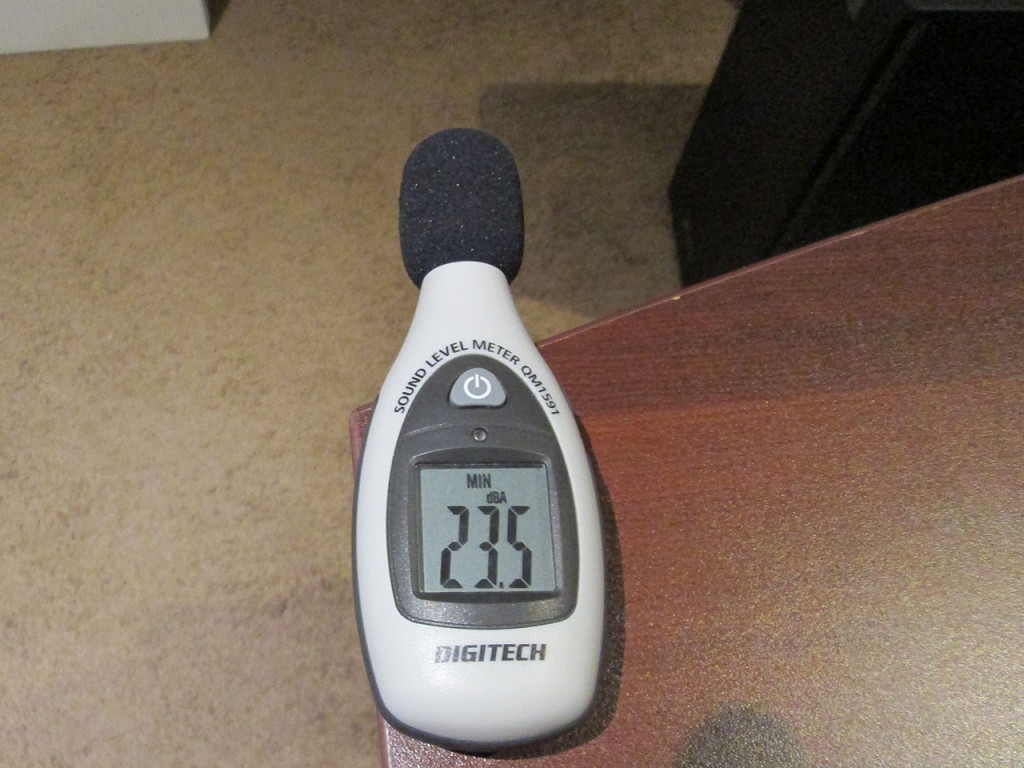
Last time I was shopping at Canada Computers, I came across an after market VGA cooler called the Accelero Xtreme III. I figured this would be a good chance to silence the video card. Unfortunately I could not figure out based on Google search if this particular cooler will be compatible with my video card. The cooler officially supports the GTX 680 reference board, but I took a gamble and decided to pick it up anyways.

Before taking the computer apart, I ran a test measurement of the PC sound level. The measured sound level was 24.7 dBA right at the back of the case.

Also took a temperature reading of the video card with the stock cooler at idle. EVGA Precision software reports 36C with the ambient room temperature at 22C.
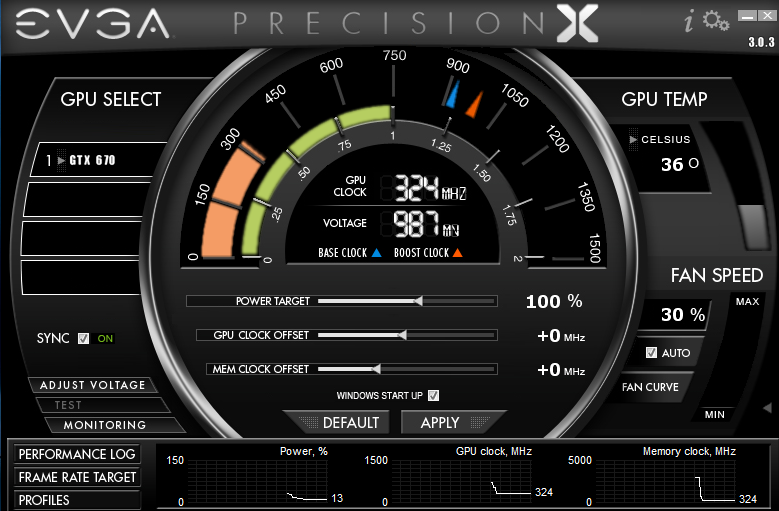
Time to start hacking at the video card. The Accelero package contains A LOT of small heatsinks. It’s possible to cool pretty much every component on the card if someone so desired. I assume all the heatsinks were provided due to the fact that this kit supports quite a variety of video cards. The odds of getting my GTX 470 working with this kit were getting better.
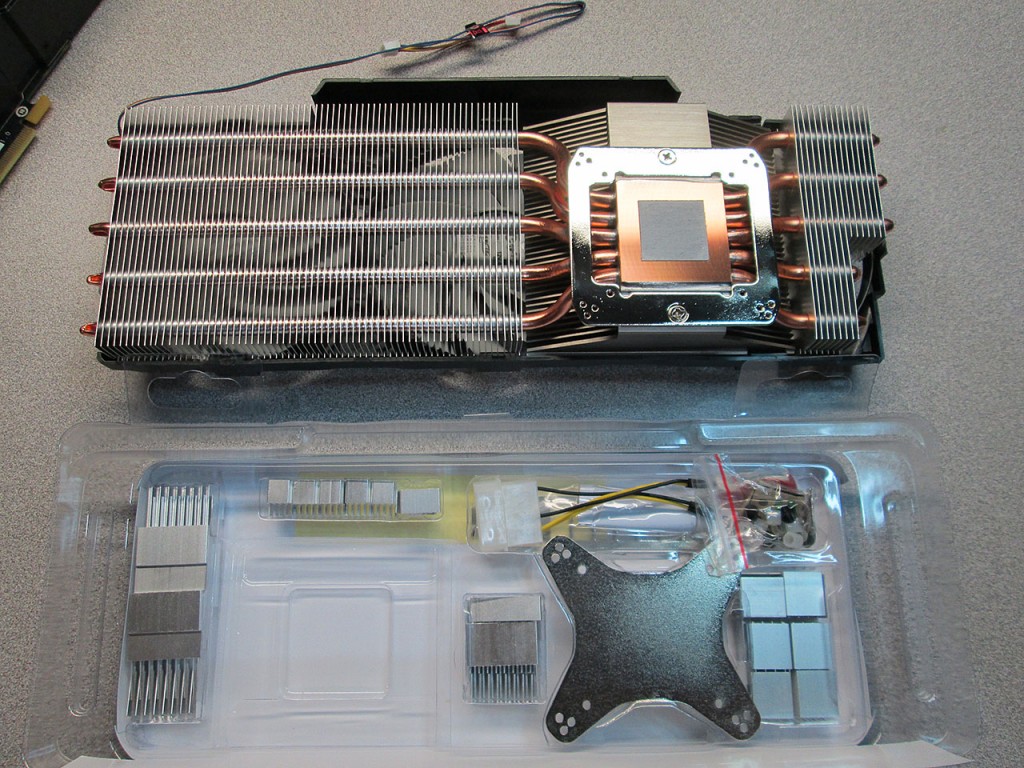

First step was to remove the stock cooler from the card. I never noticed that the card is quite a bit smaller than the cooling shroud.
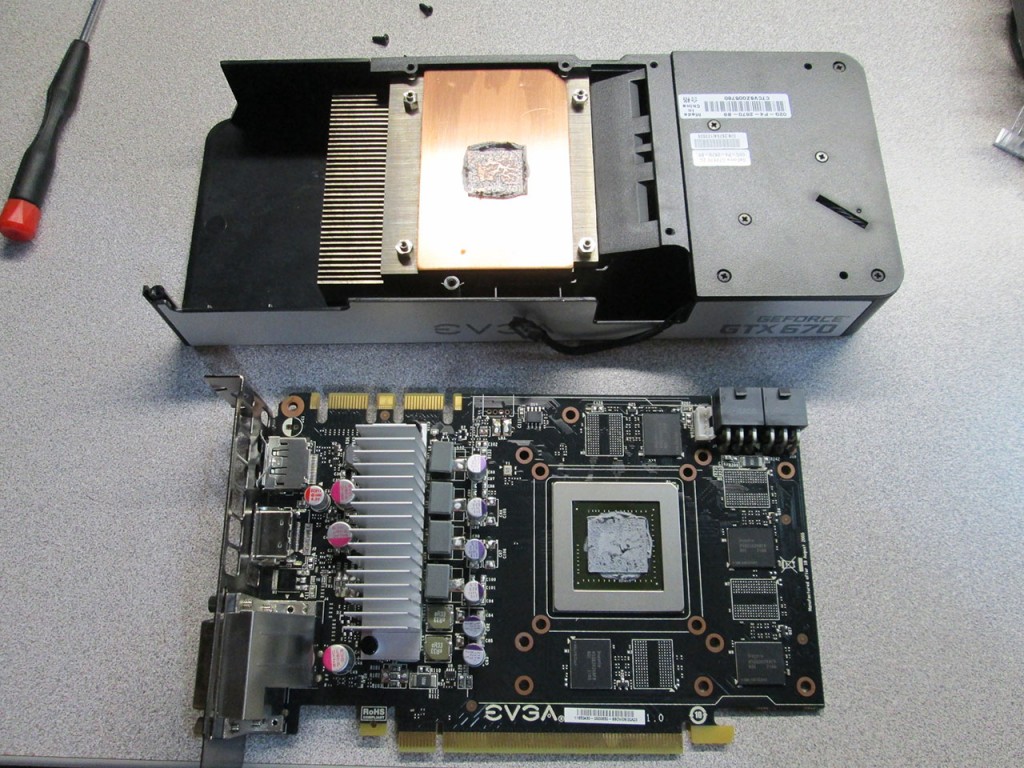
Removed the secondary heatsink exposing the voltage regulators. The stock VRM heatsink is rather large, having doubts if the much smaller individual heatsinks will be sufficient to cool the card. The VRM chips are quite small and densely packed, not a lot of room for heatsinks in the layout of the PCB.

Did a bit of test fitting to see if the small heatsinks and the main one will not interfere with each other. Took a few tries and few combinations of heatsinks to get a good, even coverage of all parts. Even though the stock board didn’t cool the RAM chips, I decided to use up some of the heatsinks and put them on there too.
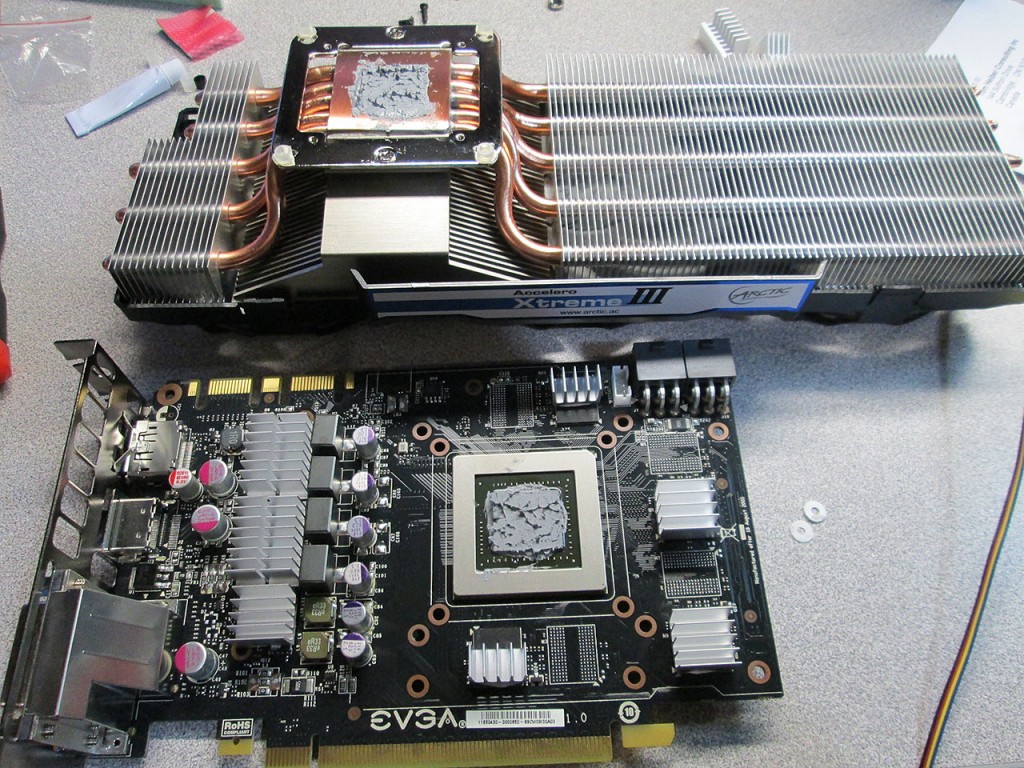
The fan/heatsink assembly mounted to the PCB. Definitely not quite perfect alignment, though it looks like it just might work. Looks like the EVGA layout moved the GPU a bit to the right which causes the heatsink to extend much farther past the card. Hopefully this contraption will still fit in the case.
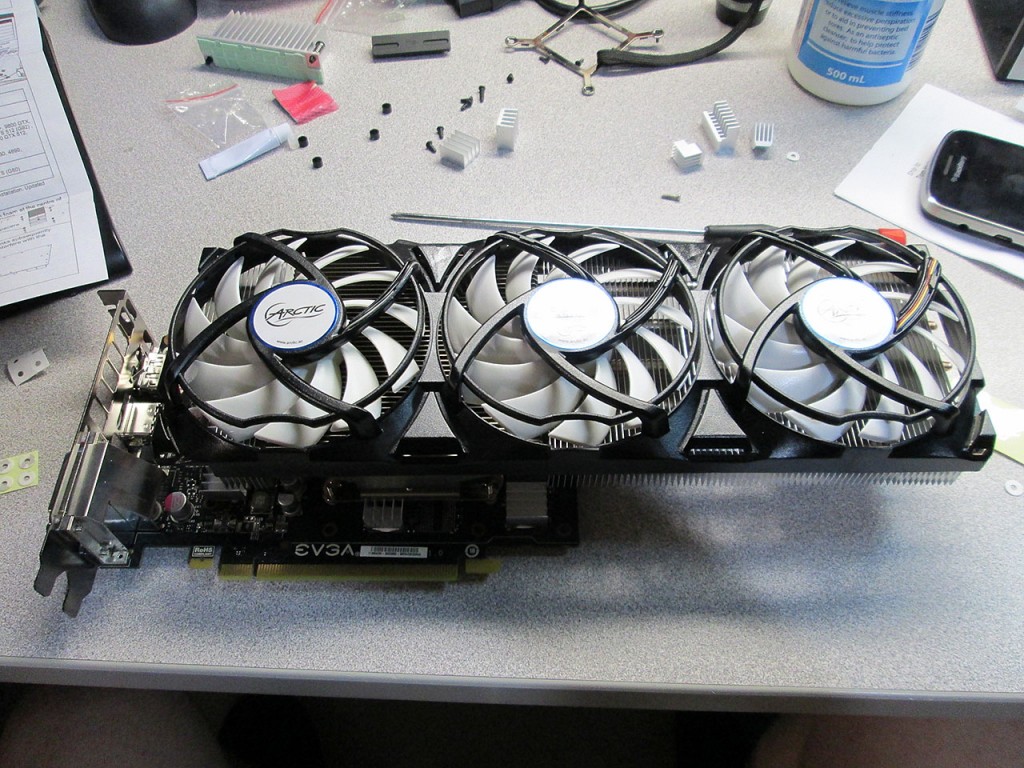
Last step was to tighten the screws on the backing plate and install more heatsinks on the RAM chips.
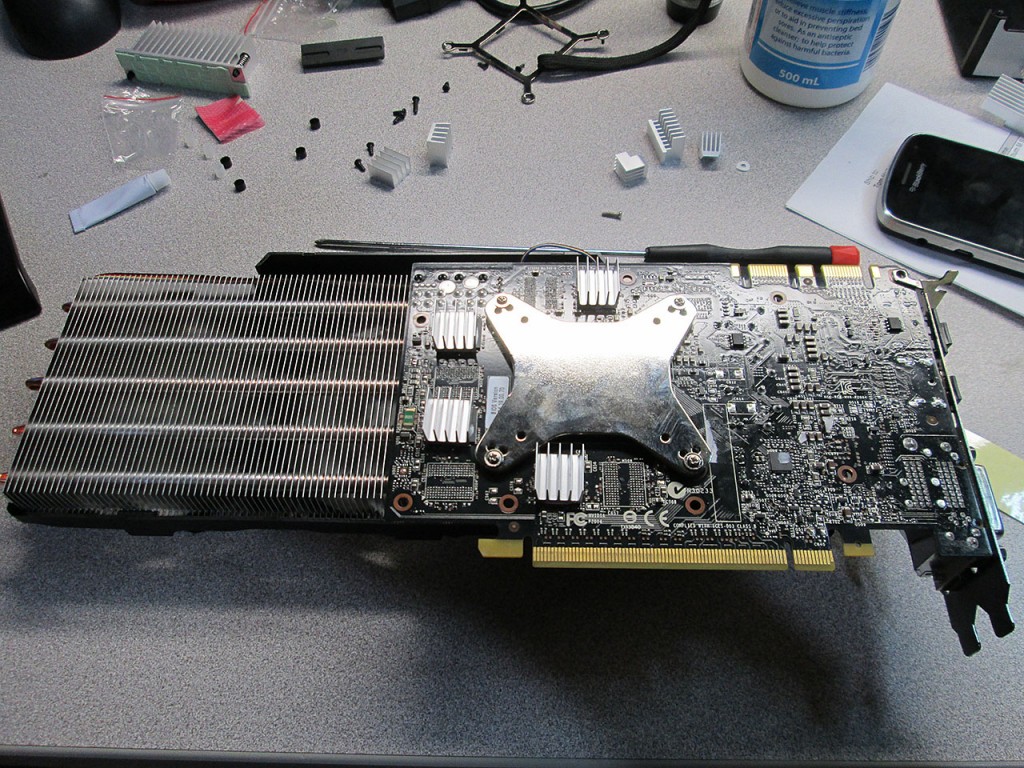
The frankenstein card just barely fits into the case. Pretty sure this would not fit in the original Centurion case I started with.
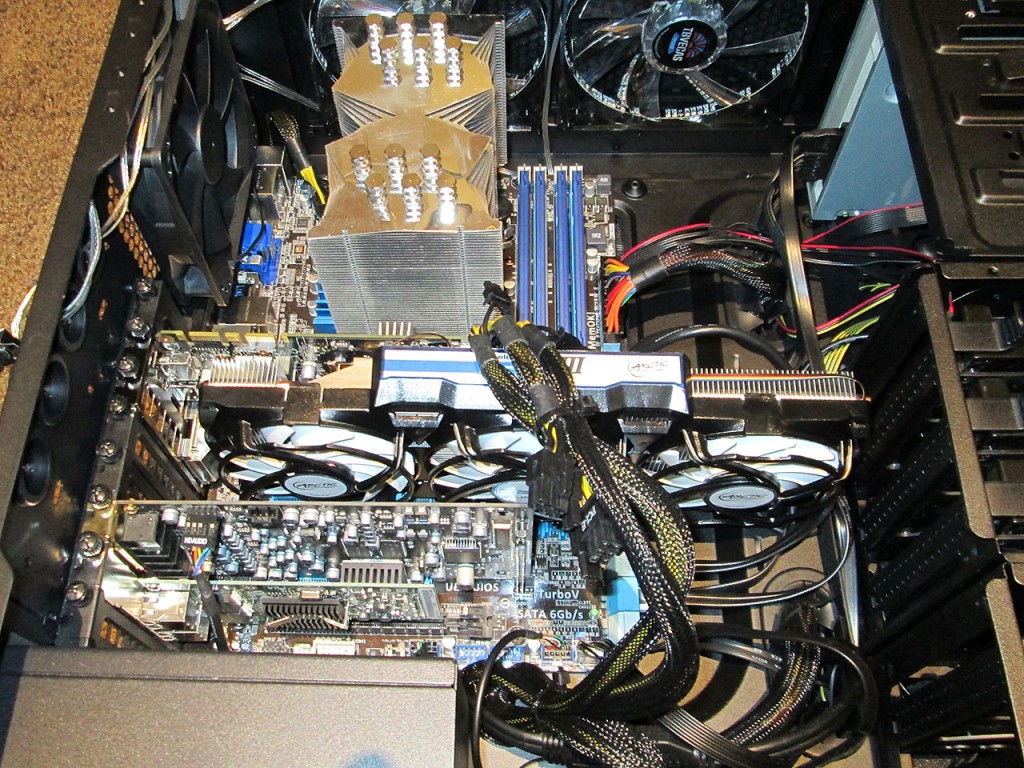
First thing first, fire up EVGA Precision X to see if the heatsink is properly cooling the components. Was pleasantly surprised to see a pretty significant temperature drop on the GPU. Even after few hours the temperature never went above 25C.
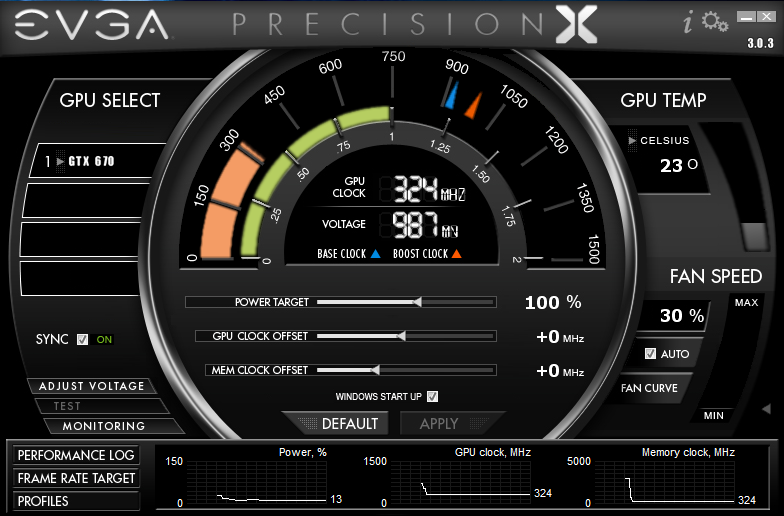
And of course the all important noise level test. The nose dropped somewhat from 24.7 dBA to 24.0 dBA. Not a significant drop as I was hoping to get closer to perfect silence.
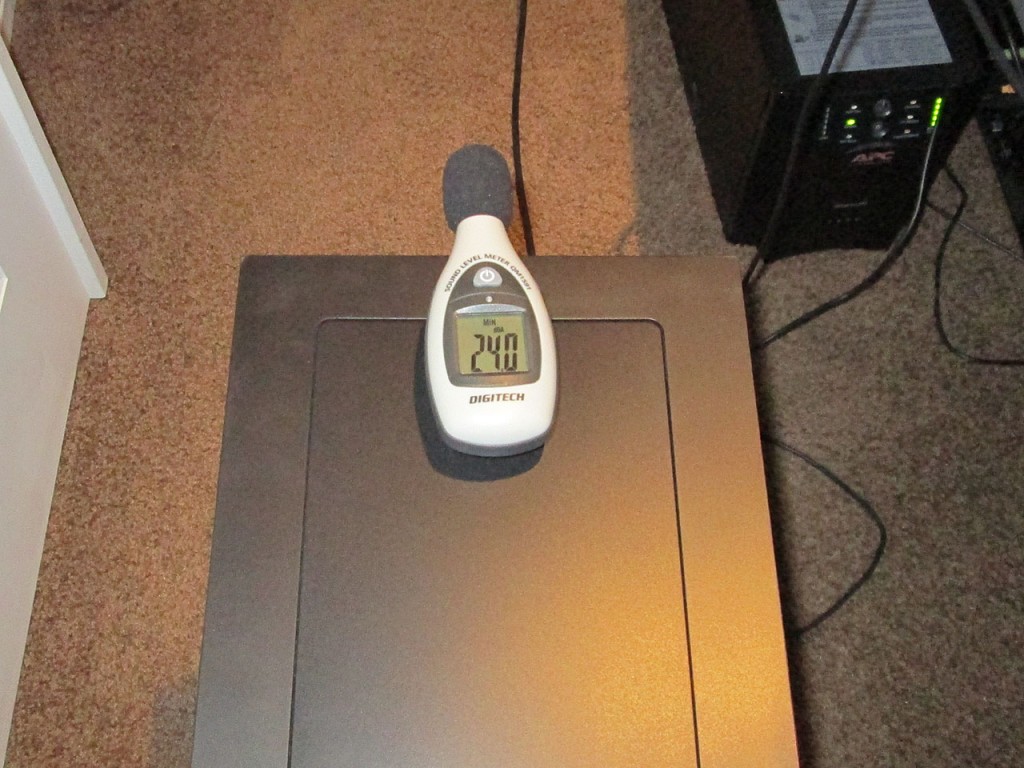
While the computer is very quiet and definitely much quieter than I originally started, it’s still not quite there. Will continue searching for ways to silence it.